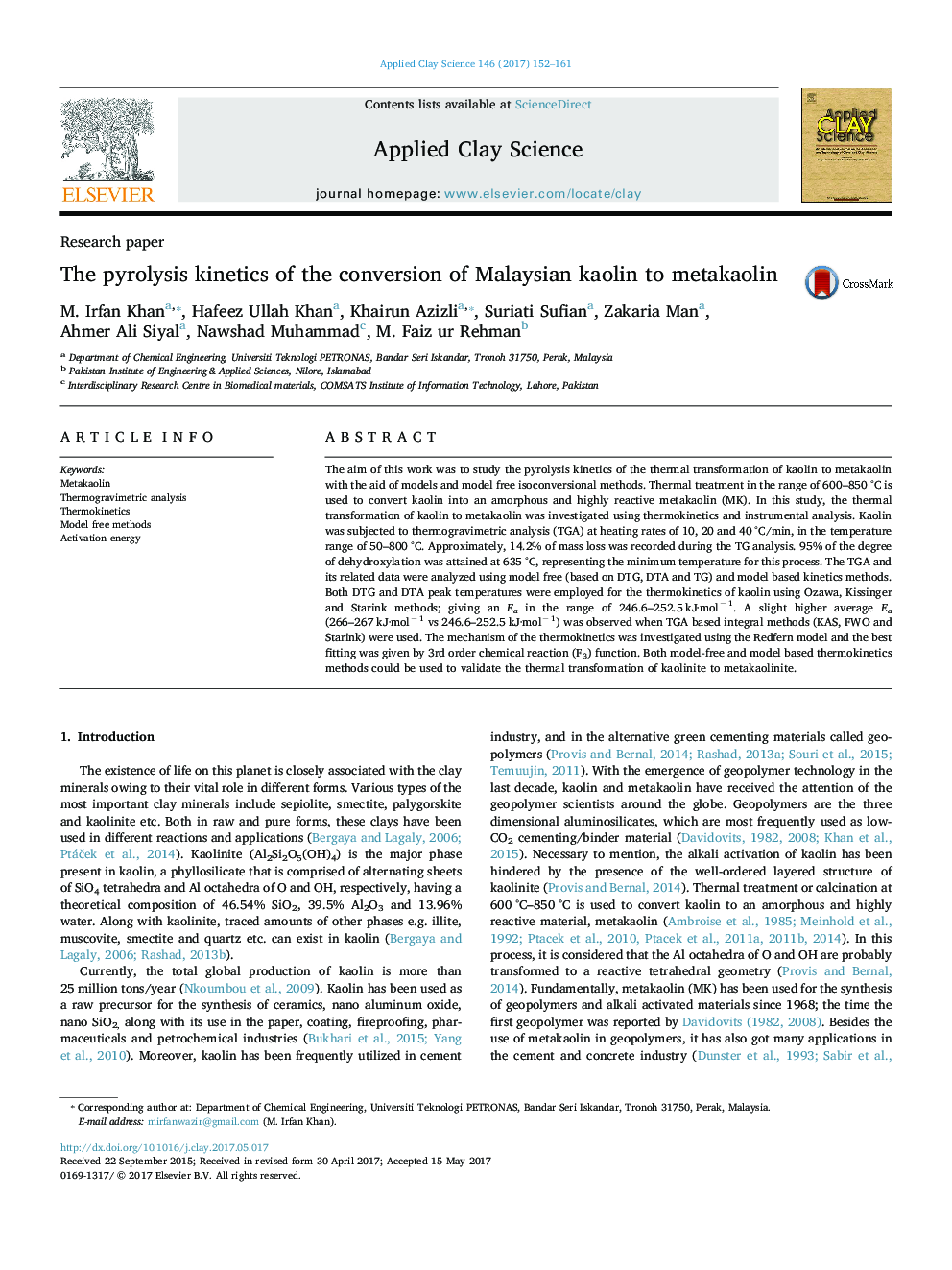| Article ID | Journal | Published Year | Pages | File Type |
|---|---|---|---|---|
| 5468838 | Applied Clay Science | 2017 | 10 Pages |
Abstract
The aim of this work was to study the pyrolysis kinetics of the thermal transformation of kaolin to metakaolin with the aid of models and model free isoconversional methods. Thermal treatment in the range of 600-850 °C is used to convert kaolin into an amorphous and highly reactive metakaolin (MK). In this study, the thermal transformation of kaolin to metakaolin was investigated using thermokinetics and instrumental analysis. Kaolin was subjected to thermogravimetric analysis (TGA) at heating rates of 10, 20 and 40 °C/min, in the temperature range of 50-800 °C. Approximately, 14.2% of mass loss was recorded during the TG analysis. 95% of the degree of dehydroxylation was attained at 635 °C, representing the minimum temperature for this process. The TGA and its related data were analyzed using model free (based on DTG, DTA and TG) and model based kinetics methods. Both DTG and DTA peak temperatures were employed for the thermokinetics of kaolin using Ozawa, Kissinger and Starink methods; giving an Ea in the range of 246.6-252.5 kJ·molâ 1. A slight higher average Ea (266-267 kJ·molâ 1 vs 246.6-252.5 kJ·molâ 1) was observed when TGA based integral methods (KAS, FWO and Starink) were used. The mechanism of the thermokinetics was investigated using the Redfern model and the best fitting was given by 3rd order chemical reaction (F3) function. Both model-free and model based thermokinetics methods could be used to validate the thermal transformation of kaolinite to metakaolinite.
Related Topics
Physical Sciences and Engineering
Earth and Planetary Sciences
Geochemistry and Petrology
Authors
M. Irfan Khan, Hafeez Ullah Khan, Khairun Azizli, Suriati Sufian, Zakaria Man, Ahmer Ali Siyal, Nawshad Muhammad, M. Faiz ur Rehman,
